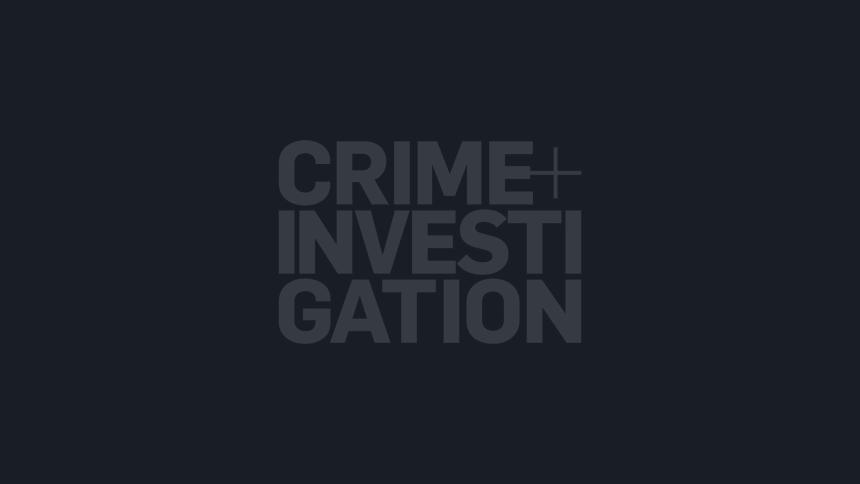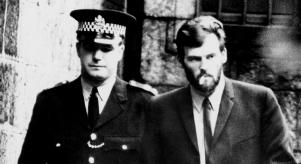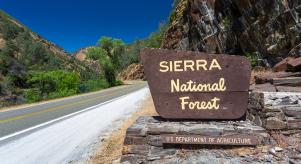
Who is D. B. Cooper?
On 24 November 1971, a man wearing a black raincoat over a dark suit and clip-on necktie entered the Portland International Airport, Oregon, USA. Carrying a black attaché case, he approached the Northwest Orient Airlines counter and asked for a one-way ticket to Seattle, Washington. In those days a person did not need to show any identification to purchase an airline ticket or even board a plane. The man simply gave his name as Dan Cooper.Cooper paid the $20 fee in cash and boarded Flight 305, a 30-minute journey aboard a Boeing 727, which took off on schedule at 2:50pm. Sitting in the rear of the plane, Cooper calmly lit a cigarette and ordered a bourbon and soda.
Miss, you’d better look at that note. I have a bomb.
Shortly after takeoff, Cooper passed a note to one of the stewardesses, Florence Schaffner. Believing the note to contain nothing more than a pick-up line and a telephone number, Schaffner ignored it. That was until Cooper leant towards her declaring, “Miss, you’d better look at that note. I have a bomb.”The exact wording of the note is unknown as Cooper later reclaimed it, but from what Schaffner later recalled, it declared Cooper had a bomb and he wanted her to sit with him. When she did he calmly opened his attaché case revealing a bunch of wires amongst some red coloured sticks. He then dictated his demands to her.Cooper wanted $200k in “negotiable American currency” and four parachutes to be delivered to the plane when it landed in Seattle. He also wanted a fuel truck standing by to refuel the plane. If these demands were not met he would blow up the aircraft killing all 36 passengers and 6 crewmembers in the process.
Described as white with a Latin appearance, middle-aged, accent-less, between 5ft 10in and 6ft tall, Cooper was apparently polite, “rather nice,” and not at all nervous. He also appeared to know the local terrain, commenting a couple times on the features below.Schaffner relayed his demands to the pilot, who in turn passed them onto air traffic control and the relevant authorities. The president of Northwest Orient authorised the payment and after two hours of circling the plane landed in Seattle at 5:39pm by which time the authorities had assembled Cooper’s demands.Now wearing wrap-around sunglasses, Cooper requested the plane taxi to a quiet well-lit part of the airstrip and demanded the cockpit lights be turned off to deter snipers. An employee of Northwest Airline approached the aircraft and exchanged the money (10,000 $20 bills with serial numbers beginning with “L”) and parachutes, which had been obtained from a local skydiving school, with one of the stewardesses onboard. At which point all 36 passengers and two crewmembers (including Schaffner) were released.
As the plane was being refueled Cooper informed the pilots he wished to fly to Mexico City. They advised the aircraft did not have the range to reach that destination without another stop. They agreed to refuel at Reno-Tahoe Airport in Nevada. Finally Cooper demanded the plane fly below 10,000 feet at a speed of around 120mph.Around 7:40pm the plane took off on its new course. Two fighter jets from the nearby Air Force Base followed the 727 (one above it and one below) and one Lockheed T-33 also shadowed it without Cooper’s knowledge.Before sending all crew to the cockpit, Cooper was seen tying something around his waist, most likely the bag of money. With no peephole in the cockpit door, the crew had no idea what Cooper was doing in the back. Around 8pm a warning light in the cockpit informed the crew that the rear airstairs had been lowered and at 8:13pm a sudden upward movement was felt emanating from the aircraft’s tail section. The jets following the aircraft saw nothing exit the airliner.Two hours later the plane successfully landed at Reno Airport and was surrounded by FBI agents and local police, who subsequently searched the aircraft. Cooper was nowhere to be seen. All that was left behind were cigarette butts, a black clip-on tie (which would later provide a partial DNA sample), two parachutes and 66 unidentified fingerprints.The first man questioned was an Oregon man called D.B. Cooper on the off chance the hijacker had used his real name. The man was quickly dismissed as a possible suspect but the media confused the hijackers name with the Oregon man’s, lodging D.B. Cooper in the public psyche. In the subsequent months and years, the police considered more than 800 suspects. They recreated the event to pinpoint a landing zone and conducted thorough ground and aerial searches. No signs of the hijacker or the parachute have ever been found.In February 1980, an eight-year-old boy name Brian Ingram uncovered three packets of badly disintegrated money with matching serial numbers to the Cooper stash, totaling $5,800. This discovery raised more questions than answers, casting doubt over Cooper’s landing zone or whether indeed he even landed safely.From early on the FBI believed Cooper did not survive the fall. Jumping into a heavy rainstorm with an approximate temperature of -7°C (-57°C with wind chill) in the pitch-black night, wearing just a raincoat and no helmet, the FBI argued it’s unlikely he “even got his ‘chute open.”The Bureau also debates his attention to detail. Out of the four parachutes (two primaries, two reserves), Cooper selected the worst two; he chose the technically inferior, older primary and the reserve parachute he chose was a training one which was sewn shut. The FBI concluded he did not have the sufficient knowledge to survive the jump and even if he did, he’d unlikely have survived the freezing mountainous wilderness he landed into.45 years on and no arrests in connection to the hijacking have ever been made. Multiple people have come forward either claiming to be D.B. Cooper or knowing who he was. Fingerprint and DNA analysis, physical attributes and lack of substantive evidence have discounted each and every one of these people. As of July 8 2016, the FBI suspended active investigation of the case.It remains the only unsolved air piracy case in U.S. aviation history.




